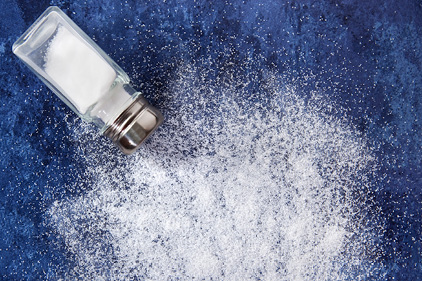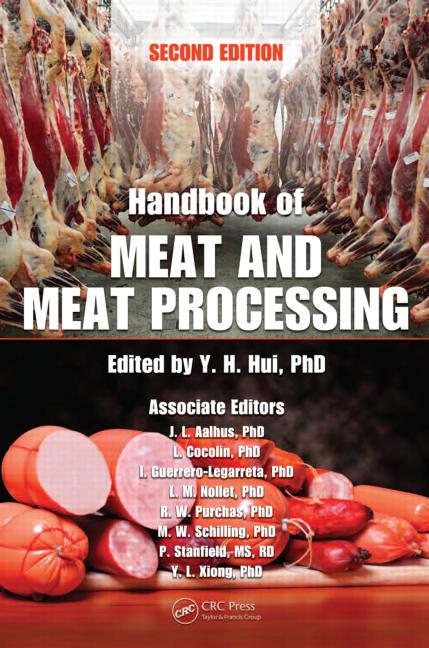Both the House and the Senate are expected to vote on the bill soon. If passed, this means that center-of-plate protein processors can slow down their efforts to (drastically) lower the sodium content of products intended for the National School Lunch Program, as sodium reductions are not going to be as extreme as many feared they would be for the very near future.

|
This bill was welcome news to the Salt Institute, Alexandria, Va., a trade association that promotes responsible uses of salt, particularly for roadway safety, nutrition and water quality. For years, the Salt Institute has taken the position that low-sodium diets trigger a negative chain reaction in the body that increases the risk of diabetes, stroke, heart attack and heart disease.
This opinion was most recently supported by a meta-analysis published in the American Journal of Hypertension (published online Nov. 9, 2011). And mid-year, Scientific American (July 8, 2011) published an in-depth article entitled “It’s Time to End the War on Salt,” which further confirmed that there’s not enough science to support government regulations forcing reductions in sodium. The article explained there is plenty of science to show that the body can fail when it does not have enough sodium, an essential mineral that is a component of sodium chloride, the chemical name for salt.
Salt Institute President Lori Roman says the problem goes beyond school cafeterias to the U.S. Dietary Guidelines on sodium, which aim to put virtually all Americans, not just schoolchildren, on a diet so low in salt it has never been seen in any country.
“We should not subject our schoolchildren or any of our citizens to what amounts to a giant lab experiment,” says Roman. “There are negative health consequences of a low-salt diet. For many children, a school lunch is their main meal of the day. They simply need salt, an essential nutrient recent medical studies associate with longer life, less heart disease and lower cholesterol, among other health benefits.”
But again, as I started out, the trend towards lowering sodium contents of foods is not going away, so this should remain a priority in your innovations lab.
Here’s something to remember: Reducing sodium in center-of-plate of proteins requires more than replacing the taste of salt, as salt also impacts other flavors, texture and function, as well as influences moisture retention, preservation, shelf life and safety. In order to reduce sodium contents, it is critical to identify the right ingredient combination that delivers taste without any product sacrifice. Seldom is a simple reduction or replacement possible. Other ingredients must almost always be considered.
Many animal-based proteins naturally contain 50 to 70 milligrams of sodium per 100 grams. So, in order to manage sodium levels in the final product, it is important to consider sources of added sodium. This includes, of course, salt, but also functional ingredients such as phosphates and lactates, which are necessary additives for ensuring the quality of many proteins.
One concept to consider is including more umami-providing ingredients. What is umami?
Umami is best described as a pleasant savory taste imparted by the amino acid glutamate, and a number of ribonucleotides, including inosinate and guanylate. These compounds occur naturally in an array of foods including meat, fish, select vegetables and certain cheeses. Umami is also recognized as a flavor enhancer. Its mode of action is different than sodium, but it can help trick the taste buds to thinking “salty.”
To better understand how umami enhances flavor, try this little experiment suggested by Tokyo-based Umami Information Center. Rinse your mouth with water, then chew a cherry tomato 30 times and swallow. The subtle, pleasant taste that lingers in the mouth is umami, as tomatoes are a naturally rich source of glutamate. This lingering taste is often described as “deliciousness” and compensates for a reduction in sodium.
One way to add umami to proteins is to formulate with yeast extracts, which not only provide the umami taste sensation, but also enhance the protein’s mouthfeel and body. Yeast extract can enhance the product’s taste, providing for faster, stronger and longer-lasting taste impressions, which allows for a reduction in sodium. Appropriate applications include formed meat products such as burgers and patties, where the yeast extract builds on the protein’s natural flavors, as well as all types of ham. Here the yeast extract strengthens the smoky and salty notes, prolonging the aftertaste.
When it comes to reducing sodium in brines and marinades, an option is to substitute some or all of the sodium phosphates with potassium phosphates, as the latter work synergistically with added salt. There are now a number of highly soluble potassium phosphate ingredients in the market that deliver the combined synergies while at the same time reduce the sodium quantity.
Because there is a slight bitterness associated with potassium, flavorings and seasonings often must be added to mask such off notes. Another option is to introduce the mineral magnesium along with potassium. Magnesium has been shown to decrease bitterness and at the same time enhance flavor and provide similar functionalities as sodium.
Cured and processed meats, which are those proteins that are often served in schools, typically contain relatively high levels of sodium. Blends of potassium and sodium pyrophosphates allow for a significant reduction in sodium, as compared to using only standard sodium phosphates. These phosphate blends also bind moisture in deli meats, allowing processors to achieve improved yield, texture and sliceability. And because they help prevent lipid oxidation, they can help extend shelf life.
It’s important to remember that just as our body needs sodium to function; edible proteins require sodium to be palatable. There are many options for reducing sodium contents in center-of-plate proteins. Finding the right combination of ingredients takes time.






Report Abusive Comment